How to Write Content to Rank in Featured Snippet

We often hear the buzz of ranking 1st on Google’s SERP, don’t we? But the featured snippet is even a higher position than No.1 in the SERP result. Many people would scratch their heads by hearing that, but you might already know that!
There is something called “zero position” in Google’s SERP which is superior to ranking no.1. This zero position is known as a featured snippet.
If any of your web pages wins a feature snippet of Google for a particular search query, you stand an even higher chance of getting more clicks and driving more organic traffic to your website.
Before showing how to write content to rank in featured snippets, let’s have an overview of featured snippets. This will help you to discern the subsequent steps with zero difficulty.
What are Featured Snippets?
To put it simply, featured snippets are pieces of content that show up on top of the SERP. They are derived from web pages in response to users’ search queries. They are meant to provide users with quick answers to their search queries.
When users search for informative pieces of content on Google, the search engine usually displays answers through featured snippets. What Google does is it analyzes each user’s search query and fetches the best answer from a web page.
However, the organic rank of featured snippets doesn’t always show up in one particular format. Rather, they appear in different types depending on the search query. This is exactly what I am going to cover in the following section.
Types of Featured Snippets
Featured snippets don’t appear on SERP in the same pattern. Rather, depending on search queries, featured snippet overview can show up differently. Let’s take a quick look at the 4 types of featured snippets–
1. Paragraph Snippets
Most of the featured snippets showing up on SERP are paragraph snippets. This type of snippet consists of 50-60 words in a paragraph format answering the search queries.
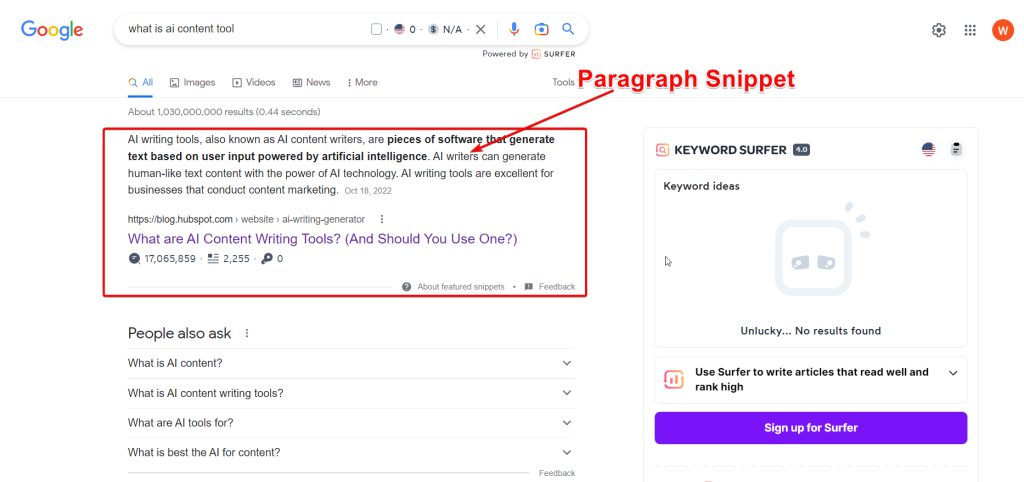
Usually, Google displays paragraph snippets to search queries containing Why, Who, What, When, and How.
2. Bulleted/Numbered List Snippets
Many times web users ask queries on the Google search box that require to be answered with a step-by-step process. For some queries, answers demand ordered or unordered lists.
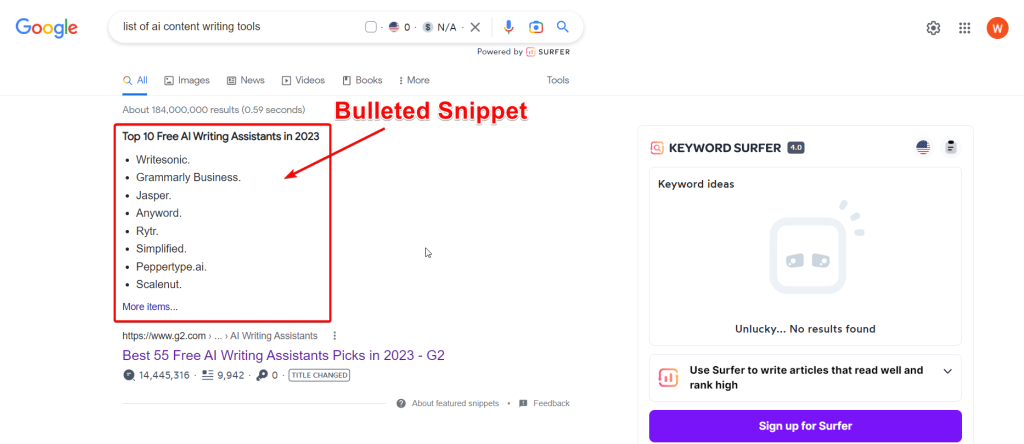
This is where Google displays the bulleted or numbered list in featured snippets. Usually, list snippets show up in queries containing how and what.
3. Table Snippets
Featured snippets crop up as table snippets as well. But that definitely depends on search query types. If a user searches for something that deals with prices, rates, sizes, years, or any other numerical data, Google shows table snippets in that case.
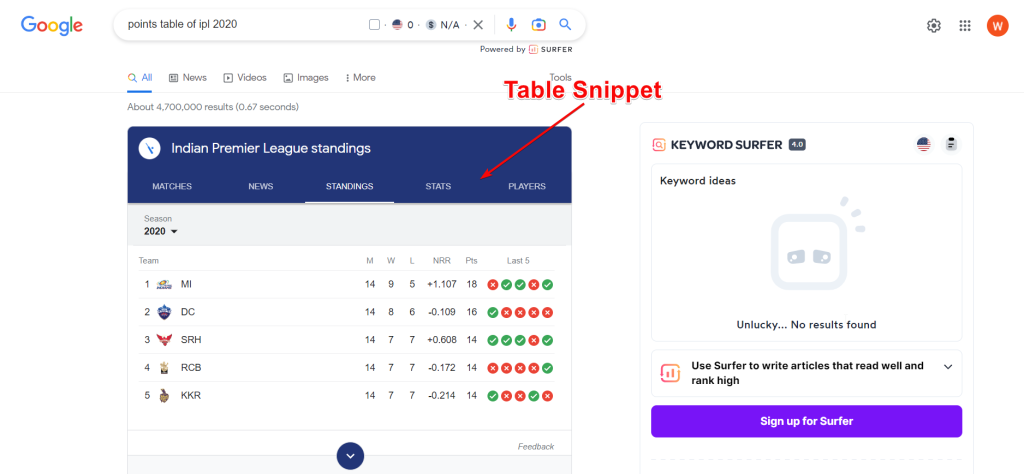
A perfect example of a table snippet search query is “Points table of IPL 2020″. If you write this keyword in the search box, you are likely to get a table snippet with the required number of rows and columns.
4. Video Snippets
Video snippets are also a common type of snippets that Google showcases in response to certain search queries. Typically, video snippets appear when users search for tutorials/how-to types of content.
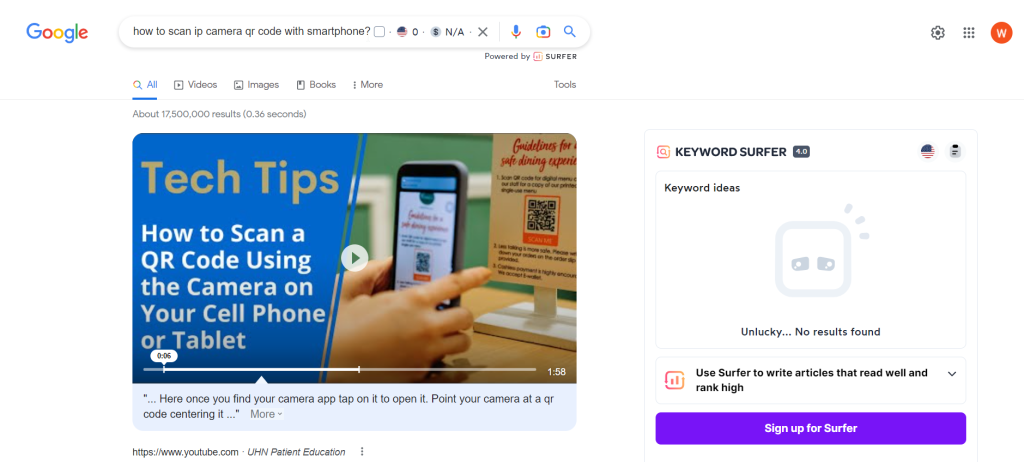
For example, if you search with the keyword “How to scan IP camera QR code with a smartphone”, you are likely to find a video snippet on top of the SERP. And that’s also with a time stamp starting from the part of the video that provides the answer to your query.
Is it Easy to Rank in Featured Snippets?
As featured snippet is a coveted position, it’s not a cakewalk to rank in that position. There are certain criteria to rank content on the featured snippets.
In this section, we will provide you with holistic guidelines for writing content on different topics and how do you rank in featured snippets. Hopefully, these tips will be instrumental in getting your pieces ranked in featured snippets.
How to Write Content to Rank in Featured Snippets: 7 Effective Steps
There are certain guidelines that you can follow to scramble to rank your pieces of content in featured snippets. And Google also boasts certain algorithms and ranking signals to rank web pages in featured snippets.
A salient point to note is that once a web page ranks in the featured snippet doesn’t necessarily mean that it will stay there forever. It can change, disappear, and appear over time.
Let’s get to know the process of showing up in the featured snippet-
1. Figure out your Competitor’s Featured Snippets
The niche that you deal with, definitely there is others in the same niche who have already occupied zero positions for relevant keywords. They are your competitors and it’s crucial that you identify their featured snippet positions.
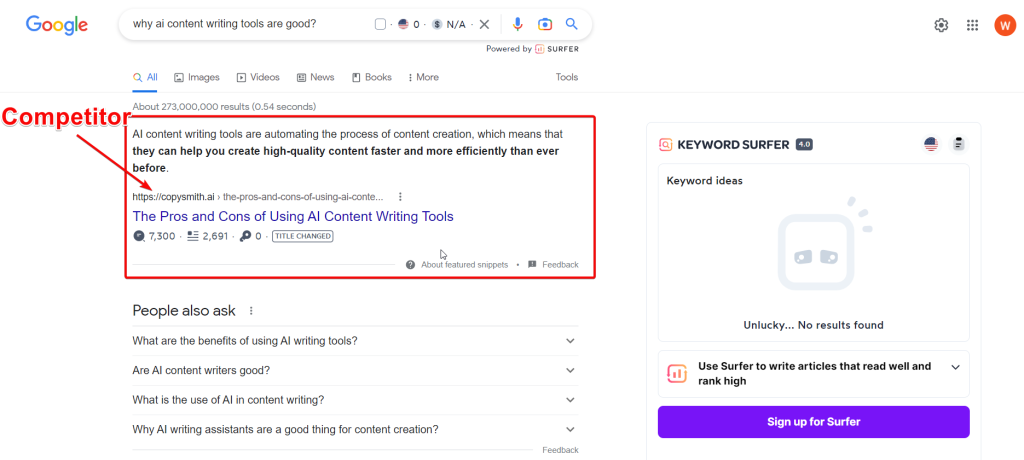
This will help you dig that what sort of keywords stand higher chances of ranking in featured snippets. It’s not a tough task to check the featured snippet positions of your competitors. All you have to do is copy and paste the URLs of your competitors into competitor analysis tools like GetGenie Ai, SEMRush, etc.
After that, you can check all the keywords of your competitors that occupied the featured snippet positions.
Then, categorize these zero-position keywords by grouping them. And then, you can start planning to rank your content for the featured snippet position.
2. Target Long-tail and Question Types Keywords
If you type any long-tail keyword or a question in the Google search box, chances are high that a web page will show up in the featured snippet. Obviously, Google will rank that web page in the featured snippet that contains the best answer to your keyword.

This hints that the first point you should emphasize to scale up your chances of appearing in the featured snippet is prepping your content with the answers of such keywords.
That means while writing page content on a particular topic, you must have the important long-tail and question-based keywords in your arsenal beforehand.
Wondering how to find those keywords?
Well, Google itself doesn’t have any tool that can help you find these keywords. But you can make use of GetGenie AI, KWFinder, etc. to research long-tail and query-based keywords.
You just have to input your main/seed keyword; in return, you will get a list of long-tail and question types keywords. Filter out the ones that you think are unnecessary and optimize your content by answering the ones that you deem fit and profitable.

3. Detail your Answers with Valuable Info
Google always strives to answer the questions of users optimally and comprehensively. Hence, if you target any long-tail keyword or a specific question, your answer to that keyword has to be holistic and accurate to organic rank for featured snippets.

For example, if a user types the question “Elementor vs Wix: Which is better?” and your web page happens to deal with it, you should answer the question broadly. Just answering the question with a one-liner is unlikely to get you in the zero position.
If you elaborate on your answer to this question and show a head-to-head comparison, you are likely to win a featured snippet position for this keyword.
4. Scale up your Current Ranking
If you are ranking currently in the lower position, it’s not wise to think of the featured snippet position straight away.
Naturally, you should think of coming up with the order first. For that, you have to take necessary steps like optimizing content pieces, improving content quality, etc. to improve your SEO ranking.

As per a research conducted by Ahrefs, Google fetches 99.58% data for featured snippets from the top 10 positions of SERP.
This shows how important it is to rank your pages in the top 10 positions of SERP to earn featured snippet positions. Try the following strategies to improve your web page ranking-
- Writing high-quality content providing value to your readers
- Cover everything that your readers are likely to look for in your piece
- Tap into focus keywords in the proper ratio throughout your content piece
- Leverage the related and secondary keywords too
- Make your website responsive, blazing fast, and mobile-friendly
- Link your pages internally, and externally
- Get backlinks from high-authority and relevant site
- Make your website navigable, readable, and well-designed
- Don’t forget to optimize your images as well
5. Adopt the Inverted Pyramid Style
Inverted or inverse pyramid style is basically a journalism technique through which a piece of content is structured. As per this method, the most coveted info is displayed upward of a piece. Other supporting details follow thereafter.

You can apply this concept in your answers while optimizing content to earn the featured snippet position for different long-tail keywords. Typically, your content should answer “Wh” questions first, followed by core details and other relevant general info.
6. Sense Users’ Search Intent
When users search for something on Google, it can be for a variety of reasons. It can be due to acquiring general knowledge, gathering data about any business, or buying anything.
If your website deals just with blogging, your aim may be just to bring organic traffic by ranking in the featured snippet position.

However, if you run an online business, you besides bringing traffic would also like to convert them. So, try to find out the search intent of your target audience and develop your content accordingly to win the featured snippet position for these keywords.
Some searches require specific answers, some require brief answers while others require answers in the paragraph and listicle format.
You can also inject comparative tables and videos in your content to answer some of the search queries to attain a featured snippet position.
7. Don’t Overlook Formatting
So far, you have applied many effective strategies in your content piece to rank for featured snippets. But still, your piece may fail to rank for the zero position if you don’t format it.
That means you have to structure your content piece appropriately to add a final touch.

You need to make it easier for Google to pick up your entire page content. For that, you can employ certain tactics and hopefully, that will ease the process for Google to pull text from your page.
Check them out underneath-
- Write descriptive headers including long-tail and question-like keywords
- Write concise and punchy sentences
- Avoid using run-on sentences and long paragraphs
- Tap into bullet points, numbered lists, tables, and graphs
- Break up your content with images, videos, and GIFs
How to humanize AI content to rank better 🔥
Ready to Rank in Featured Snippet Position
The featured snippet is the most coveted position in the Google SERP, even more than the No.1 position. By ranking in this position, you can not only drive traffic to your website but also convert your visitors many times.
But as we mentioned earlier it’s not a cakewalk to earn this position. You must convince Google that your answer to a particular query is the best one. Only then, you can notch up this tantalizing position.
So, follow all the steps shown above to write content to rank in the featured snippet. And then you can qualify to be odds-on-favorite in the race of winning featured snippet positions. However, AI tools like GetGenie can also help you generate content that ranks in featured snippets.
